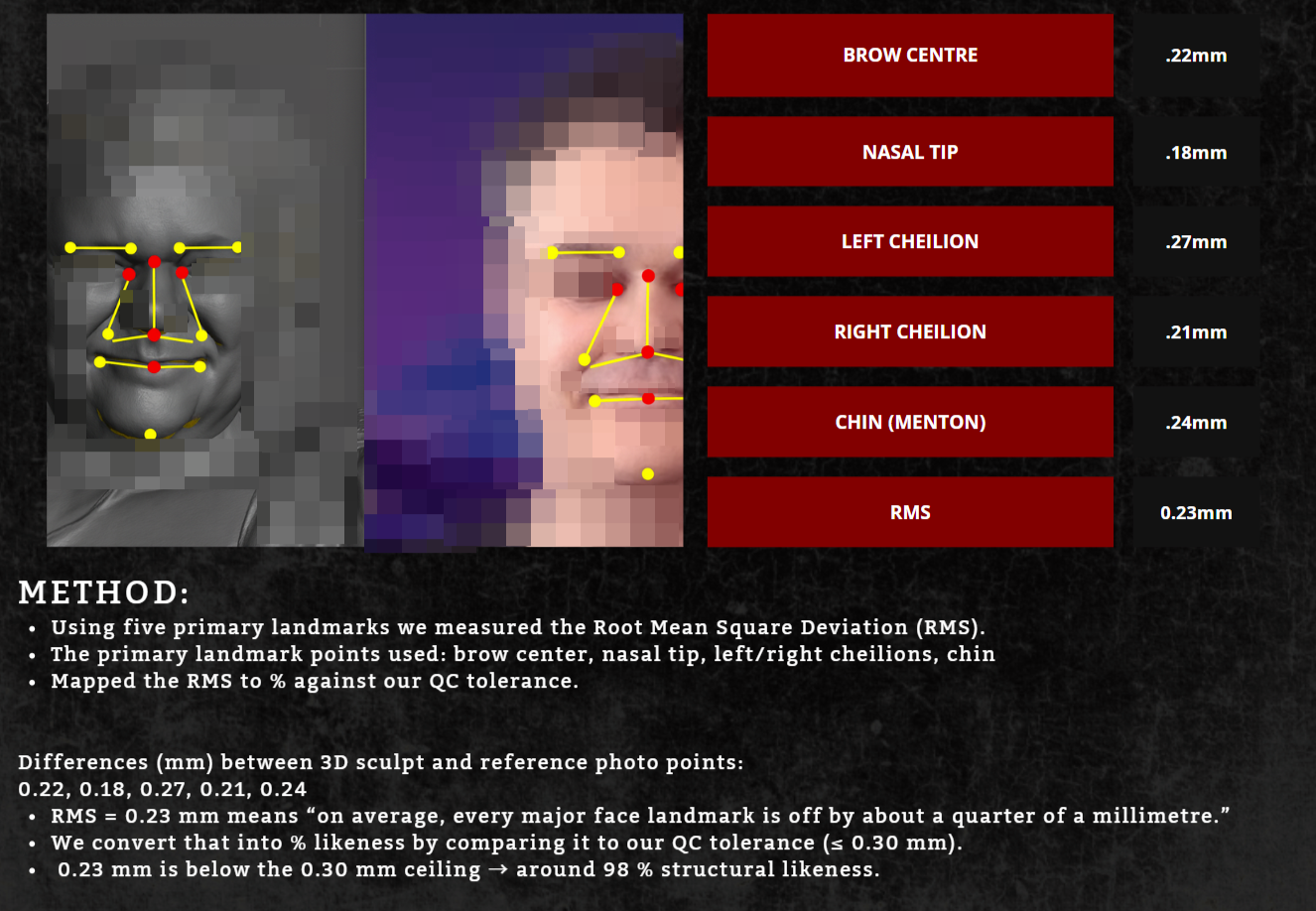How we verify Anatomical accuracy
Arcanium Studios maintains a high quality control tolerance of 97% or greater. Our artists work with AI to maintain this precision and provide customers the transparency of our methods.
Using a blend of traditional sculpting practices and makeup artist concepts, we deliver sculpts that aim to bear a close resemblance to the subject.
From Claim to Proof: How We Verify Anatomical Accuracy
Facial landmark workflow — professional sculpt reference vs AI × Human (Valehart)
Why it matters: Both workflows aim for likeness, but the Valehart method quantifies it. RMS (Root Mean Square Deviation) expresses the average landmark variance between a sculpt and its reference in millimetres — letting artistic judgement sit inside measurable tolerance.
METHOD:
RMS = √((Σ Δ²) / n) where Δ = difference in mm between matched landmarks, n = number of points (5).
SAMPLE OUTPUT:
Differences (mm): 0.22, 0.18, 0.27, 0.21, 0.24 → RMS = 0.23 mm ≈ 98 % structural likeness (≤ 0.30 mm threshold).


